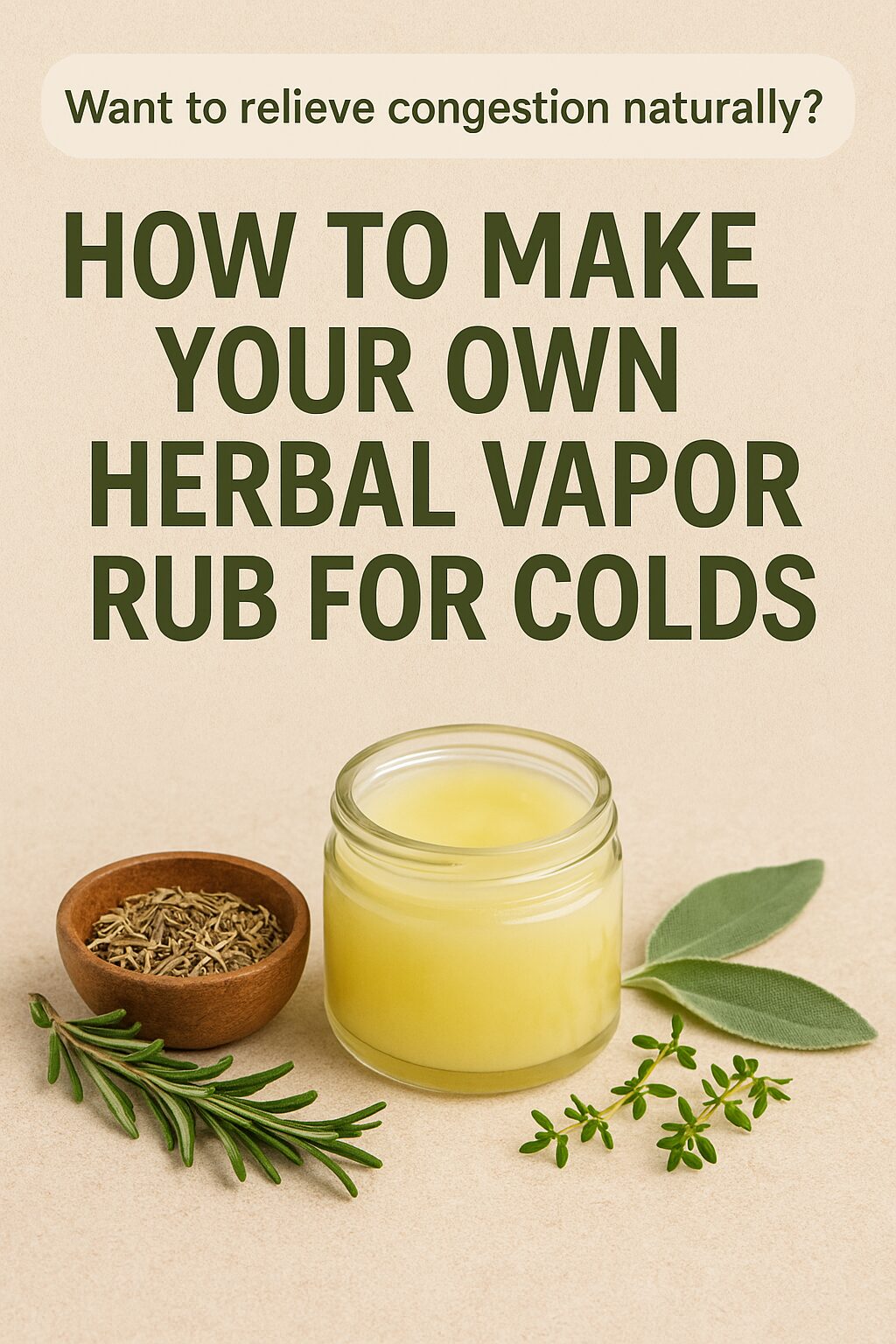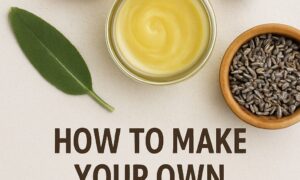When cold season arrives, many people turn to vapor rubs to ease congestion, soothe a sore chest, and make breathing easier. While store-bought options can be effective, they often contain petroleum-based ingredients or artificial fragrances. Making your own herbal vapor rub at home is a natural, customizable alternative that not only smells wonderful but also offers therapeutic benefits from pure essential oils and nourishing carrier bases.
This guide will walk you through the benefits of an herbal vapor rub, the best ingredients to use, and step-by-step instructions to create your own.
Why Use an Herbal Vapor Rub?
Herbal vapor rubs work by combining aromatic plant oils with a base such as beeswax and coconut oil. The warmth of your skin releases the vapors, which can help open nasal passages, reduce cough, and ease minor muscle aches related to colds. Some advantages include:
- Natural ingredients – No artificial chemicals or synthetic fragrances.
- Customizable scent and strength – You can adjust the blend to your needs.
- Moisturizing properties – Carrier oils soothe dry skin irritated by frequent tissue use.
- Long shelf life – If stored properly, your rub can last several months.
Key Ingredients and Their Benefits
1. Coconut Oil
A natural moisturizer with mild antimicrobial properties. It serves as the main carrier for essential oils and gives the rub a smooth, spreadable texture.
2. Beeswax
Provides structure and helps the rub stay solid at room temperature. It also forms a light protective layer on the skin.
3. Eucalyptus Essential Oil
Well-known for its ability to open nasal passages and ease congestion. Its fresh, camphor-like scent is invigorating and soothing.
4. Peppermint Essential Oil
Contains menthol, which produces a cooling sensation and can help calm coughing fits.
5. Rosemary Essential Oil
Supports respiratory health and boosts circulation, which can help you feel more energized during illness.
6. Lavender Essential Oil (Optional)
Adds a gentle floral aroma and promotes relaxation, which may improve sleep quality when you’re under the weather.
Safety Notes Before You Begin
Essential oils are potent and should be used with care. Always dilute them in a carrier oil before applying to skin. Test a small patch on your forearm to check for irritation. Avoid using strong essential oils on infants and young children, and consult a healthcare provider if you have chronic respiratory issues or are pregnant.
Step-by-Step: Making Your Herbal Vapor Rub
Ingredients:
- ½ cup coconut oil
- 2 tablespoons beeswax pellets
- 15 drops eucalyptus essential oil
- 10 drops peppermint essential oil
- 8 drops rosemary essential oil
- 5 drops lavender essential oil (optional)
Instructions:
- Melt the Base Oils
Place the coconut oil and beeswax in a heat-safe bowl. Set the bowl over a pot of simmering water (double boiler method) and stir occasionally until fully melted. - Remove from Heat
Once the mixture is liquid, carefully remove the bowl from the heat source. Let it cool slightly, but not so much that it begins to solidify. - Add Essential Oils
Add your essential oils, stirring gently to blend. Adjust the number of drops according to your scent preference, but avoid using more than 3% essential oil in total to keep the rub skin-safe. - Pour and Set
Transfer the mixture into small tins or glass jars. Let it cool completely at room temperature until it becomes firm. - Store Properly
Keep the vapor rub in a cool, dry place away from direct sunlight. Under proper storage, it can last up to six months.
How to Use Your Herbal Vapor Rub
- Chest and throat application: Rub a small amount onto your chest and throat before bed to help keep airways open while you sleep.
- Under the nose: For quick relief, apply a tiny amount just under the nostrils (be careful to avoid getting it inside your nose).
- On sore muscles: Gently massage into tight or achy areas to take advantage of the warming and cooling sensations from the essential oils.
Tips for Customizing Your Recipe
- For a softer rub: Use less beeswax and more coconut oil.
- For a stronger scent: Increase essential oil drops slightly, but stay within safe dilution guidelines.
- For a child-friendly version: Reduce the amount of strong oils like eucalyptus and peppermint, and consider using gentle oils like chamomile.
- For an extra boost: Add a few drops of tea tree oil for its antibacterial properties.
Final Thoughts
Creating your own herbal vapor rub is a rewarding project that combines the healing power of plants with the comfort of a soothing balm. Not only will you have a natural remedy ready for cold season, but you can also enjoy the process of crafting something tailored exactly to your needs. With a few basic ingredients and some essential oils, you’ll be able to whip up a batch in under 20 minutes — and breathe easier knowing you’re using something pure and effective.






















